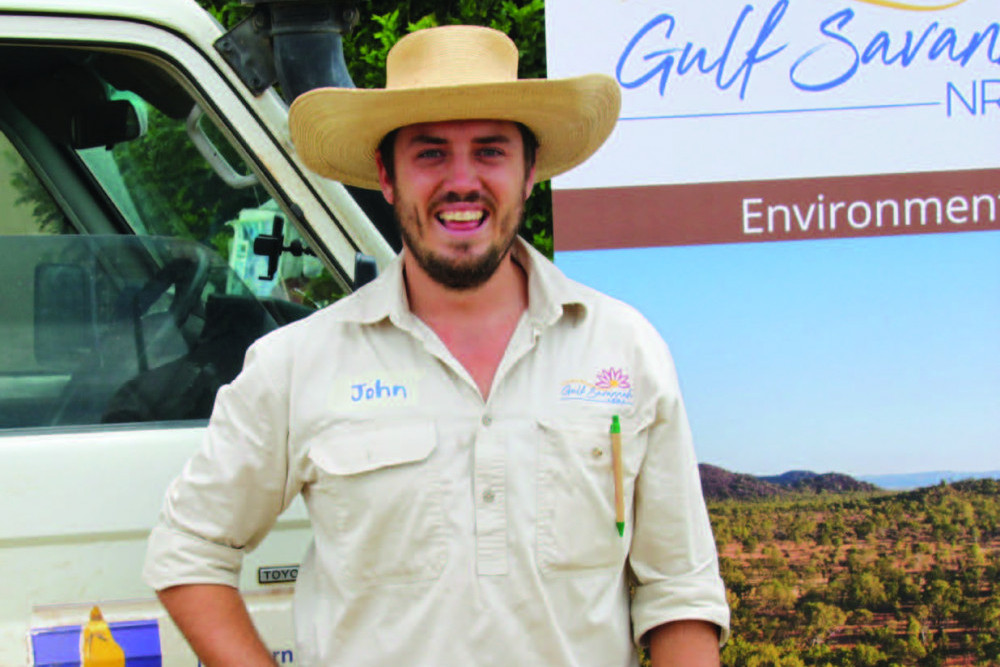On The Land
1 December, 2021
New climate forecast model for farmers
ASK any farmer to list their greatest annual threats and opportunities, and they are sure to mention the market and the season, knowledge of which have traditionally been extremely hard to come by.

As a country with one of the world's lowest mean rainfalls and highest rain variability ratings, Australian agriculture is subject to more revenue volatility than almost any other nation on the planet, placing huge financial and emotional pressure on producers and their communities.
Thankfully, this year the forecast looks good for the region with the Bureau of Meteorology calling a light La Nina. They are forecasting a 70-75 per cent chance of above median summer rainfall for northern and eastern Queensland.
But a La Nina or El Nino event are not usually called until late in the year and effective farmers need to capture a picture of the whole season and start making management decisions by around August.
Rangelands Project Officer with Gulf Savannah NRM, and “Climate Mate” with the Northern Australian Climate Program, John McLaughlin, has developed a new climate forecasting and decision-making platform which involves keeping an eye on the seven key climate indicators from May until December.
“Short and long range weather forecasting has been around for a long time, but it is hard for people to interpret the data. The issue with the BOM site is it is complicated and presents too much detail, which can detract from the message it is trying to relay,” Mr McLaughlin said.
“You just need to look at the right drivers. Farmers should spend around 30 minutes a month completing a climate guide developed for their area if they want to understand how the climate will affect them in the coming season.”
From May, it is possible to start looking at The Long Paddock's AussieGRASS Rainfall and Pasture Growth three-monthly maps for the heads up on how receptive pastures will be to rain, when to do earthworks, spray weeds, spell or burn country, plant seed, stock up on feed, move, wean, buy or sell cattle.
From June, the El Nino Southern Oscillation (ENSO), can often detect weather patterns that may indicate the likelihood of an impending El Nino, a La Nina or a neutral weather system for the coming season.
The ENSO is one of the most important climate phenomena on Earth due to its ability to change the global atmospheric circulation, which in turn, influences temperature and precipitation across the globe.
Coupled with the Pacific Ocean Sea Surface Temperatures (STT), these two drivers can give a very strong indication of a looming La Nina or El Nino model.
Currently all seven of the international climate models surveyed by the Bureau anticipate further cooling of tropical pacific SST's and La Nina thresholds being met during December and January, but only four models continue the event into February.
The European Centre for Medium- Range Weather Forecasts (ECMWF) kicks in around July, calculating anomalies from a 51 member model using verification scores from a 36 year forecast period 1981 - 2016.
By September, the BOM 3 month rainfall prediction for October to December becomes active and this combined with data from the UK Meteorological Office (UKMO), which models probable temperatures and rainfall for up to 6 months ahead, beefs up the season forecast.
Finally the Madden-Julian Oscillation (MJO), is a major weekly to monthly fluctuation in tropical weather, which can be characterised as an eastward moving ‘pulse’ of cloud and rainfall near the equator typically recurring every 30 to 60 days. The MJO becomes relevant in November and only in the wet season when there are conditions to amplify.
“The important thing to remember about using this system, is that you don't necessarily have to understand all the climate ‘speak’ for it to make sense. You are simply looking for a consistent message repeated throughout all of the climate drivers,” Mr McLaughlin said.
“While it is ideal to be tracking a good season, this data is even more useful when a poor season is forecast, giving producers six months to plan for early weaning, culling cattle and preparing for the worst case scenario.
“With 55 per cent or 427 million hectares of Australian land use dedicated to agricultural production, the importance of climate preparation cannot be overestimated. Accurate forecasts and informed land managers creates realised opportunities for the farming secto,” Mr McLaughlin said.


